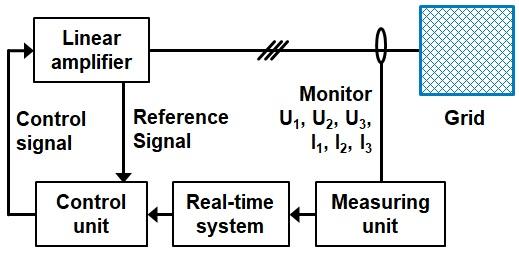Internationale Partnersuche
Innovation & Technologie Angebot
Linear amplifier control system for real-time control of phase and amplitude in single- and multi-current systems
Country of Origin: Germany
Reference Number: TODE20180531001
Publication Date: 13 June 2018
Summary
A German research group has developed a new concept for linear power amplifiers, which are a critical component of line impedance stabilization networks to assess the compliance of electrical networks and equipment under dynamic operation conditions. Sought are industrial partners developing hardware-in-the-loop systems, or providers of automotive equipment tests, photovoltaic system tests, and electrical grid tests for licensing, transfer of rights (pending patent), or for R&D collaboration.
Description
Line impedance stabilization networks (LISN) are used to assess electrical networks and equipment for its compliance in dynamic operation conditions. Linear power amplifiers currently used in LISN are only able to simulate stationary networks with respect to phase and amplitude, while transient network signal simulation is not yet possible. But in reality, voltage and phase depend on the load of the power source.
A German research group has developed the electronic realization of the trigonometric sinus function in an analogous control unit to change phasing and amplitude of multi-current systems in real-time. In combination with a linear power amplifier this control unit enables the simulation of transient / dynamic electrical networks with unprecedented quality, and it offers additional benefits compared to conventional systems.
As illustrated in the figure, the measuring unit sets the voltages U1, U2, U3 to zero in reference to the linear amplifier output. A control oscillator in the linear amplifier generates a reference signal which in turn is generated through a control signal sent by the control unit as input to the linear amplifier. The reference signal is fed into the control unit to generate three (sinusoidal) control signals, which are coupled to the input channels of the three individual amplifiers of the linear amplifier. Dynamic control is achieved using a real-time system which receives values for voltages and currents from the measuring unit and feeds these values to the control unit and the linear amplifier.
This technology can be applied in hardware-in-the-loop test systems, in automotive equipment tests, photovoltaic system test, and electrical grid tests. Hence, partners from these sectors could benefit from a transfer of rights of the existing IP (patent pending), licensing, or a R&D collaboration to refine the technology for integration in market-ready equipment.

Advantages and Innovations
The new technology enables the simulation of dynamic electrical networks with unprecedented quality and offers the following advantages in comparison with conventional linear power amplifiers.
A continuous adjustment of amplitude and phasing is possible, which enables the application for simulation of any voltage or power generator. Conventional systems only allow for a static setting of amplitude and frequency, which does not reflect the real situation in grids and power sources.
Testing of engines and inverters in asymmetrical load situations is possible due to a combination of digital and analogous equipment.
Undesired harmonics are reduced to a minimum. They usually occur in conventional equipment using digital signal processing or micro controllers for phase changes.
In case of changing phase by using conventional all-pass circuits, ohmic resistors with dynamic adjustment and a broad working range are used. No such resistor is required with the new technology.
Stage Of Development
Concept stage
Requested partner
Developer of hardware-in-the-loop systems or industrial partners active in automotive equipment tests, photovoltaic system tests, and electrical grid tests are sought for licensing, transfer of rights (pending patent), or R&D collaboration.
During a R&D collaboration, e.g. with a hardware-in-the-loop systems manufacturer, the new technology could be prototyped and integrated in existing measurement equipment to assess its performance.
Cooperation offer ist closed for requests

